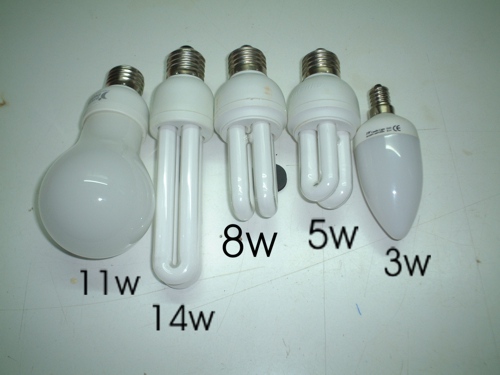For the moment I do not have a luxmeter, so there is no results concerning the brightness, this test is simply about the power consumed compared to the indication given on the bulb.
Edit here are the results:

For the method read more or go directly here: https://www.econologie.com/forums/ampoules-f ... html#28303
Protocol:
a) tests carried out with a counter on hold,
b) on a E27 base lamp and an E14 socket,
c) measurements taken after 2 minutes of "warm-up time" (but the consumptions ultimately vary when the bulb is hot, 10 to 15% maximum)
d) a test of a complete desk lamp sold to consume 11W has also been realized. It is equipped with a G23 bulb 11W (complete desk lamp was also realized) but with a transformer not integrated in the bulb.
e) all fluo bulbs are in 2700 ° K except that of Spot Eco which is in 6400 ° K (so very cold but ideal for work or an external light)
These tests concern: a) "Lucide" desk lamp
CFL bulbs made of E27:
a) Lumika 20W E27 bought in 2004
b) Lumika 15W E27 bought in 2004
c) Massive 9W E27 purchased late 2005
d) Massive 15W E27 purchased late 2005
e) Phillips 9W E27 purchased in 2004
CFL bulbs made of E14:
a) Ectron 7W E14 bought in 2006
b) Ikéa 7W E14 bought late 2000
c) Massive 9W E14 purchased late 2005
A massive incandescent bulb of 60W. (still hanging in a cardboard box)
Map of my "Testing laboratory"



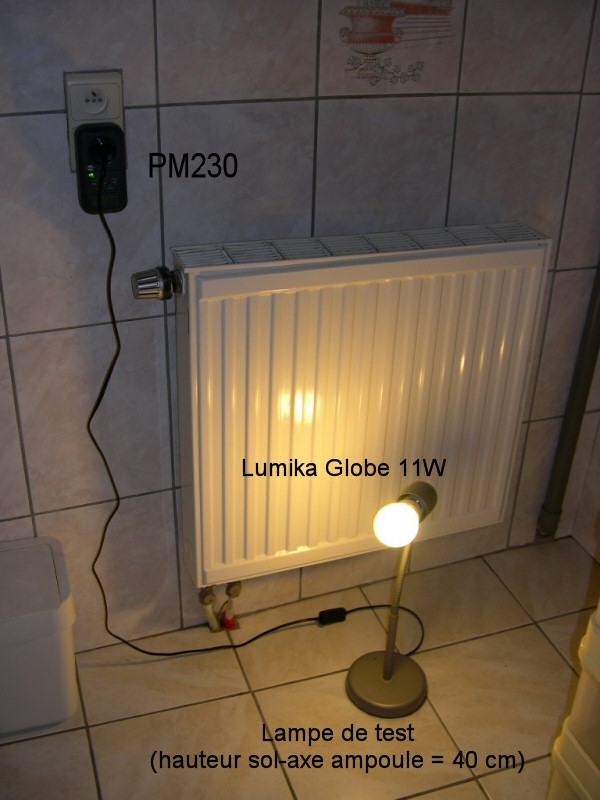



Mesures
1) Desk lamp brand "Lucide" (ok it is very ugly, although 20 years ago it had to tear) paid 5 € at the end of stock out of curiosity!
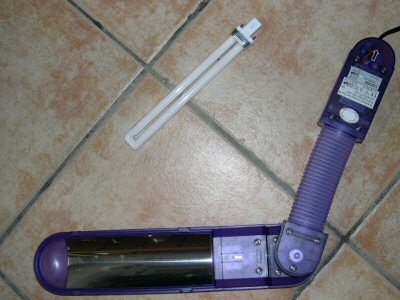
Label (sorry for the quality it is a reflective label so very hard to photograph well):


OSRAM bulb with 23W G11 base.
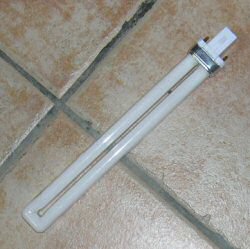
Measured consumption: 37,60W.
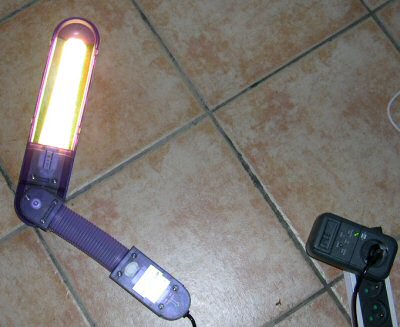
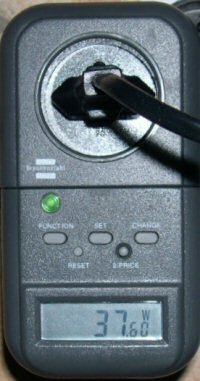
Constant consumption after 3 minutes.
Overcapacity coefficient: 37,60 / 11 = 3,42 is a measured power / power ratio of 342%!
Conclusion: pay attention to the tube-based compact fluorescent lamps G (G23 G24 * GX24 * and 2G * or * = more specific references) or the transformer is external (unlike E14 and E27 fluocompact) and that consumes (in my case) the equivalent of 2,42 times the power of the bulb.
So we end up with a global consumption of 3,42 the power of the bulb! It's a safe bet that this is the case (multiplier coefficient greater than 3) with all the transformer desk lamps.
2) Compact fluorescent bulbs made of E27:
a) Lumika 20W measured consumption: 18,01W.
Measured power / power given: 90%
b) Lumika 15W measured consumption: 16,45W
Measured power / power given: 109,6%
c) Massive 9W measured consumption: 11,50W
Measured power / power given: 127,7%
d) Massive 15W measured consumption: 18,96W
Measured power / power given: 126,4%
e) Phillips 9W measured consumption: 14,1W
Measured power / power given: 156,6%
CFL bulbs made of E14:
a) Ectron 7W measured consumption: 9,52W.
Measured power / power given: 136%
b) Ikéa 7W measured consumption: 9,50W.
Measured power / power given: 135,7%
c) Massive 9W measured consumption: 11,85W.
Measured power / power given: 131,6%
60W Massive Incandescent Bulb: 64W.
Measured power / power given: 106,7%
The Eco SpotLight spot given to 22W: 20,85W.
Measured power / power given: 94,7%
Analysis
a) Measured power
Unless otherwise (Lumika 20W) all compact fluorescents consume more than what is indicated.
With one exception (the Phillips that consumes 1,5 times the power given) it remains reasonable (20 30%) but still important (1 / 4)!
By cons nothing to do with the difference of more than 300% on the LED bulbs see https://www.econologie.com/forums/ampoules-a ... t2118.html )
Is it due to the aging of the lamps? Hypothesis unlikely since "old" lamps like the Ikea which is almost 6 years old have the same coef. than new ones.
On the other hand, its intensity seems lower than a "new" model of 7W so the light efficiency would tend to decrease over time? It would be necessary to compare exactly the same new model and that of 6 years to be rigorous ... not easy.
Anyway brightness tests with a Luxmeter are coming ....
b) Measured power / power given
Average on 8 compact fluorescents: 126% is 1 / 4 of consumption in more than that which is indicated.
Average on E27: 122% is 1 / 4 overconsumption.
Average on E14: 134% is 1 / 3 overconsumption.
It would seem therefore that the more powerful the bulbs are, the more the overconsumption decreases (for the 20 and 22 W bulbs there is indeed no overconsumption on the contrary there is a slight under consumption) compared to what is indicated but it would take a larger sample of lamp to conclude.
Conclusion
The apparent "overconsumption" compared to what is advertised seems to decrease with the power of the bulb.
Tests on more significant samples and other means of measurement should be carried out to conclude more precisely.
Be that as it may, a more complete file that will measure the luminous intensity of compact fluorescents, LEDs and incandescent bulbs is being created.



